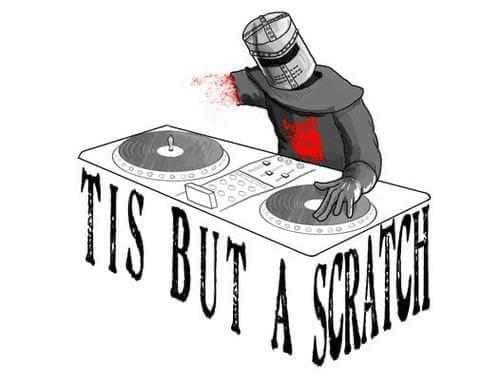Fools War 2024
Heavy Weapons Marshal in Charge:
Shair Fiachna mac Phiaraic, aka Theahtyn
Combat Archery Marshal In Charge:
Baroness Laurettia atte Blacksterre, called Lourene
Friday Fighting Schedule:
| Time | Event |
|---|---|
| 6:00 PM | Armor inspection opens for Friday Night Fights! |
| 7:30 PM | Friday Night Fights Begins! |
Friday Night Fights!

Friday Night Fights – the only Meridian torchlight tournament where the fighters make a grand entrance to their own theme music. There will be dancing, there will be singing, and there will be weapons slinging. We will be hosting Heavy Combat, Rapier, and perhaps even youth combat if these kiddies come to party!!! All authorized fighters are invited to participate. This year’s torchlight tournament will be Friday night at Fools War around 8:00 PM. (Times may be flexible, so bear with us.) Fighters are encouraged to RSVP by Sending Duke Timothy of Long Bennington a Facebook PM. Send me 2 choices of entrance music (or be brave and let Duke Timothy pick for you). Anyone who fails to RSVP enters the fighting field to a song of Duke Timothy’s choice.
Inspections start at 7:30
Saturday Fighting Schedule:
| Time | Event |
|---|---|
| 8:30 – 9:30 AM | Armor Inspection Opens |
| 10:00 AM | Fighting Scenarios Start (Field battles will include Combat Archery) |
| TBD | Lunch after completion of the first 3 scenarios or so |
| After Lunch | Fighting Scenarios Resume |
| ?:?? PM | Fighting ends when the fighting ends… |
BATTLE SCENARIOS
Each will be played twice with all or part of each team alternating sides.
Battle of Guinegate (1479, August 7) Open field scenario – no resurrections, except two-handers once
Battle of Marignano (1515, September 13-14) Double bridge scenario – 2 resurrections
Battles for Navarre (1522) Castles, capture and free villages scenario – unlimited resurrections, timed
Battle of Pavia (1525, February 24) Castle and field scenario – 3 resurrections
Siege of Vienna (1529, Sept 27 to Oct 15) Castle siege and sally scenario – Germans 4 resurrections, Ottomans 3 resurrections
Fighters wielding great swords and/or wearing Landsknecht gear will receive bonus lives in resurrection battles.
